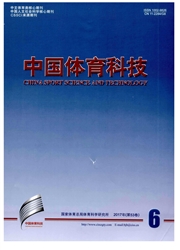

 中文摘要:
中文摘要:
目的:转录因子NF-E2相关因子(Nrf2)-Kelch样环氧氯丙烷相关蛋白-1(Keapl)信号通路是细胞氧化应激反应中的关键通路。普遍认为,长期低氧训练会影响抗氧化能力,研究试图通过对小鼠施加低氧暴露、低氧训练两种方式,探讨其对小鼠骨骼肌Nrf2/Keap1结合量和Nrf2、Keap1、p-Nrf2蛋白表达以及活性氧(ROS)水平的影响。方法:C57BL/6J小鼠30只,分为3组,分别是对照组(C)、低氧组(H)和低氧训练组(HT)。其中,小鼠跑台训练的跑速为12 m/min,1 h/d,6 d/周,持续4周;低氧浓度为10%,8 h/d,持续4周。干预结束后脱颈处死取后腿两侧骨骼肌。Western Blot法测定骨骼肌Nrf_2、Keapl和p-Nrf_2的蛋白表达。免疫共沉淀法测Nrf2/Keap1结合量。高质荧光测定法检测小鼠骨骼肌ROS水平。结果:与C组相比,H、HT组小鼠骨骼肌中Nrf2/Keap1结合量显著升高,游离Nrf2显著降低,p-Nrf2蛋白表达显著降低,游离Keap1基本无变化。WHT组ROS水平显著高于WC组。结论:氧浓度为10%的4周低氧暴露和低氧训练均抑制了小鼠骨骼肌Nrf2和Keap1的解绑作用;低氧训练组小鼠骨骼肌p-Nrf2蛋白水平非常显著性降低,可能是造成ROS水平显著升高的原因之一。
 英文摘要:
英文摘要:
Objective: NF-E2-related factor 2(Nrf2)-Kelch-like ECH-associated protein-1 (Keapl) signaling pathway is a key pathway of cell oxidative stress reaction. It is generally believed that the long-term hypoxic training could impact oxidation resistance. This research attempts to apply hypoxic training on mice to study the binding capacity of Nrf2/Keap 1 and the contents of Nrf2, Keap 1, p-Nrf2 proteins in skeletal muscle. Methods: The 30 C57BL/6J mice were divided into three groups: control group (C), hypoxia group (H), hypoxic training group (HT). The mice ran on treadmill in speed of 12 rrdmin, lh/d, 6d/week, for 4 weeks. Oxygen concentration in hypoxia chamber was 10%. Mice were treated for 4 weeks, 8h/d. After both the interventions, the mice were sacrificed and collected skeletal muscle of legs. The expression of Nrf2, Keapl and p-Nr% were analyzed by western blot. High quality fluorescence assay was done to detect ROS level in skeletal muscle of mice. Re- sult: Compared with C group, NrfdKeapl binding capacity in skeletal muscle ofH, HT groups mice was significantly increased while free Nrf2 and p-Nrf2 were significantly reduced respectively. Free Keapl did not change in skeletal muscle of mice; The ROS level in skeletal muscle of HT group mice significantly increased compared with C group mice. Conclusion: Hypoxia and hypoxic training which oxygen concentration was 10% could reduce the Nrf2/Keapl unbinding capacity in skeletal muscle of mice. The exerpression of p-Nrf2 in skeletal muscle of mice in hypoxic training group was significantly reduced, which may result in marked increase in ROS level.
 同期刊论文项目
同期刊论文项目
 同项目期刊论文
同项目期刊论文
 期刊信息
期刊信息
